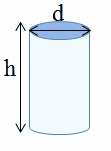
Species details
- Cyclotella hakanssoniae: Wendker (1991)
- Cyclotella caspia: Grunow (1878)
Solitary, more rarely cells join together to form colonies of 2-3 cells. In girdle view the cells appear drum-shaped, while in valve view they appear circular. From the centre of the valve to the margin identical striae are visible, and between the striae rimoportulae are visible. The central area is undulating and has fultoportulae. Around the margin of the cell, randomly arranged granules of silicon are visible.
- Cell Diameter: from 4 to 12 µm
Marine and brackish environments.
Distribution: as Cyclotella caspia. Europe: Romania (Caraus, 2002), Asia: China (Li, Liu, Chen, Tam, Shin, Cheung & Luan 2008).
As Cyclotella choctawhatcheeana
Europe: Finland (Weckstrom & Juggins, 2006); North America: California (Prasad & Nienow, 2006), Florida (Prasad & Nienow, 2006).
Not reported.
Resistence Stages:Not reported.
The algae of Romania., Studii si Cercetari, Universitatea Bacau, Biologie 7, Caraus I., 2002, 1-694
The genus Cyclotella (Bacillariophyta) in Choctawhatchee Bay, Florida, with special reference to C. striata and C. choctawhatcheeana sp. nov., Phycologia 29:, Prasad A.K.S.K., Neinow J.A., Livingston R.J., 1990, 418-436
Physiological responses of the alga Cyclotella caspia to bisphenol A exposure., Botanica Marina 51: ., Li R., Liu Y., Chen G., Tam N.F.Y., Shin P.K.S., Cheung S.G., Luan T., 2008, 360-369
Coastal diatom-environment relationships from the Gulf of Finland, Baltic Sea ., Journal of Phycology 42:, Weckstrom K., Juggins S., 2006, 21-35.
Checklist of Baltic Sea Phytoplankton Species. Baltic Sea Environment Proceedings No. 95, Helsinki Commission Baltic Marine Environment Protection Commission, Hällfors G., 2004,
_635192487376990000.jpg)
_635192487450750000.jpg)
